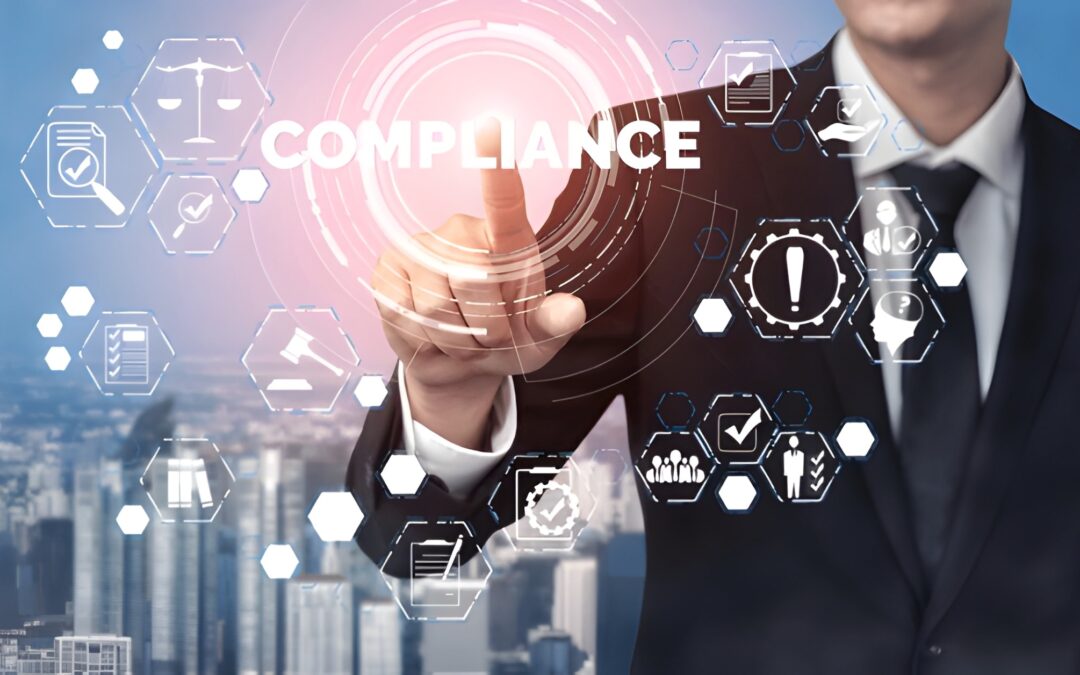Navigating the IT Compliance Landscape
Regulations and compliance processes have an evolving nature, and it often becomes increasingly difficult for any organizational body to ensure adherence to them. Then again, with proper cybersecurity compliance, an organization can achieve significant efficiencies. By aligning with a cybersecurity framework and following an IT compliance checklist, a company can gain a competitive advantage, protect its reputation, build trust among stakeholders, and ensure sustainable growth.
In fact, staying ahead of IT regulatory compliance would allow firms to keep growing because of the improved decision-making process and reduced manual intervention. Although we are aware of the importance of maintaining compliance with the IT regulations, we face challenges in ensuring that all of them are followed thoroughly. To avoid such challenges, this comprehensive checklist will be of great help for security and compliance.
Overview of This Guide
- Identify the core components of an IT compliance checklist
- Ways to implement the compliance checklist effortlessly
- Importance of staying ahead of IT compliance with a checklist
What Is an IT Compliance Checklist?
An IT compliance checklist is a set of guidelines that provide specific instructions on how an organization can ensure a smooth operation flow. By conducting an audit of the operations of the business with a checklist outlining many aspects, it can ensure compliance with requirements. Key compliance elements, such as the standards for encryption, access control, and so on, are related to protecting the sensitive data.
Breaching sensitive information by an unknown external source can cause a firm to suffer heavy financial repercussions and operational failures.
Generally, regulatory bodies lay out the compliance checklist, which becomes important for an organization to meet compliance standards in the implementation process. Also, by standardizing compliance frameworks, organizations can reduce costs, according to 50% of compliance professionals (Source: JumpCloud, 2024).
Although the regulations are published online, having a checklist would be useful to ensure alignment between internal rules and external legal requirements, where some overlap may exist.
Businesses need a structured framework for compliance because it is useful to identify the standards that are aligned with the company’s structure. Having a checklist is essential to safeguard the infrastructure and streamline compliance. It also serves as a roadmap for an organization to meet its regulatory requirements and standards.
Failing to adhere to the compliance regulations can lead to violations of the regulations and result in fines.
Core Components of an IT Compliance Checklist
After understanding the importance of having an IT Compliance Checklist, it is now essential to thoroughly explore the core components that adopt relevant standards to common compliance.
1. Network Security
Having a secure network is important to protect from potential cyber threats. Network security or information security encompasses a range of technical, administrative, and physical protection to avoid various types of risks and to support security compliance under frameworks and standards like NIST standards and HIPAA compliance, where applicable.
Key Actionable Items:
- Implement robust measures like encryption, firewalls, and secure file transfer protocols
- Utilize intrusion detection systems to pinpoint security risks
- Develop comprehensive backup and recovery plans as part of your compliance checklist, controls, and compliance strategy.
2. Access Control Management
This part of the checklist concerns access to systems, machines, networks, and physical locations from unauthenticated sources. Controlling access to the data from outside enables a company to be protected from unauthorized access. Having an access control management process in the compliance checklist improves user experience for authenticated sources and strengthens the organization’s compliance posture.
Key Actionable Items:
- Security policies-Enforce multi-factor authentication and strong password policies
- Implement Role-Based Access Control (RBAC) and the Principle of Least Privilege (PoLP)
- Regularly review and update user access permissions
3. Data Protection & Encryption
By having a security measure to prevent the data from being stolen, changed, or compromised, a company can ensure the prevention of data corruption. An encryption of data is an additional layer of protection for the data from unauthorized parties and helps achieve compliance efforts with regulatory standards.
Key Actionable Items:
- Ensure data is encrypted both at rest and in transit, following industry security standards for encryption protocols.
- Establish secure storage solutions and implement regular backup procedures to protect against data loss or breaches.
- Comply with data protection regulations like GDPR and HIPAA, while also adhering to relevant standards for data security, ensuring that all processes align with the latest industry guidelines.
4. Incident Response Planning
To protect the company from the uncontrollable consequences of sudden malicious attacks, an incident response plan must be implemented in a structured manner. It is important to ensure automated compliance, allowing the company to streamline its response efforts and continuously meet regulatory requirements without manual intervention.
Key Actionable Items:
- Develop and document incident response protocols
- Conduct regular drills and update plans based on lessons learned
- Ensure timely communication and reporting during incidents
5. Regular Audits & Monitoring
The process of ensuring compliance does not just involve following the compliance guidelines. Having a checklist regularly audited and ensuring a continuous monitoring process would enable effective implementation of the guidelines, allowing a company to stay updated with the changing regulations in IT.
Key Actionable Items:
- Schedule periodic compliance audits and vulnerability assessments
- Utilize automated tools for continuous monitoring
- Maintain organized documentation for audits to meet compliance and demonstrate security compliance.

Implementing the IT Compliance Checklist: A Step-by-Step Guide
The importance of implementing the regulatory requirements cannot be overlooked. Below are the guidelines to help you avoid unnecessary financial losses and data breaches. By adhering to these processes, you ensure the organization stays compliant and safeguards sensitive data effectively.
- Preparation
Assess current compliance posture and identify gaps. By identifying the gaps, include the necessary guidelines in the checklist. Ensure that the external requirements do not overlap with the internal limitations.
- Execution
Implement necessary controls and policies. Avoid overdoing it, as it can slow down the process of ensuring the safety of data. Also, make sure that while implementing them, it does not affect the way operations are being carried out. Otherwise, implementing the guidelines can take more time and even resources unnecessarily.
- Monitoring
Establish continuous monitoring and regular reviews. Monitor whether the guidelines are being implemented on time, whether best practices of compliance are adopted, and whether there are any actions that need to be taken further to avoid data breaches. This leads to effective implementation of the guidelines without having to do them all at once, and without costing a firm thousands of dollars.
- Tools
There are many tools available to ensure the effective implementation of compliance management. Go through the features of each tool and explore whether it is possible to integrate them with the current systems and workflows. Sprinto, Vanta, and so on are compliance management software that can be installed to ensure compliance with the checklist.
Frequently Asked Questions (FAQ)
What are the consequences of non-compliance?
There are many potential consequences of non-compliance, and they include potential legal, financial, and reputational risks. Violation of the non-compliance could lead to a firm suffering from heavy financial losses. Data breaches by unknown sources can undermine its reputation and even result in legal consequences.
How often should an IT compliance audit be conducted?
According to industry standards, it is recommended that an internal audit be conducted quarterly to ensure that the company adopts the compliance requirements. For an external audit, it can be done annually.
Can small businesses afford compliance tools?
Yes, there are low-cost and free compliance management tools. Google Cloud has many features available at a low cost. Other options are also available, such as Safety Culture, Pirani, and so on, which offer a free version.
What are the latest trends in IT compliance?
The latest trends in IT compliance involve data privacy in a hybrid work environment. There is an increasing need for data protection for employees, sometimes causing confidentiality risks. Another trend is the importance of environmentally-friendly solutions in IT compliance that need to be complied with because of the increasing demand for addressing climate change concerns. Organizations must take many more innovative steps for audit readiness.
Conclusion: Staying Ahead in IT Compliance
Staying ahead in IT compliance allows your company to enjoy a good reputation for having control over data breaches and ensuring data transparency. This can give you a competitive edge, enabling your company to reach new heights. It has become more important than ever to protect your data from cyber attacks and ensure the confidentiality of the personal data of employees. Rather than just adhering to the IT regulations, it is essential to create a checklist to ensure that the regulations are effectively implemented and monitored. Achieving operational efficiencies becomes easier and cost-effective when IT compliance is implemented and monitored with the relevant tools.
At Crown Computers, we are committed to making sure that our service is a rewarding experience for our clients. By assessing your business network, we can prepare your network to be secure. You are only as strong as your weakest link, and one person’s small mistake can end up costing you hundreds of thousands of dollars. Our “Ultimate Peace of Mind” Plan is an insurance policy against major network disasters and chaos that could be created by hackers or other threats.
Need an “insurance policy” against computer disasters? Call us at +1-858-483-8770 or visit our website to learn more.
